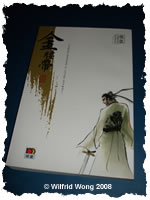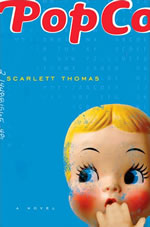
I have read tens or perhaps hundreds of English books but none matches the sensation I derive from reading in my mother tongue. Like this particular book I am going to feature here, I was so deeply affected that my mind just wouldn’t allow me to do anything else right after I’ve finished reading the book. The plot was alive in my mind for days thereafter. I still cannot pinpoint why. All I could guess is that the reading pleasure may come in fourfold: the native understanding of the passages, the linkage to the culture and tradition, the construct of the phrases, and the depth and complexity of the development of human characters within.
People at times tease me on how much I suck in English spelling, which is true. Unlike English whereby words are constructed in alphabets that can be pronounced without knowing the underlying meanings, you can’t do the same for Chinese characters. You may be able to recognize the meaning of a character because characters are often assembled in components that represent the picture, sound, color, or the combined meaning. It is only fair to say that I am trained in recognizing and replicating words in the form of characters rather than memorizing the pronunciation of the words in alphabets. While I can quite easily find a Chinese book that I can recognize 99.99% of the words within, I can hardly say the same for English, by a far margin.
Recognition of words aside, it is often the context of a certain phrase derived from some literatures written in the old days that contributes to the art value of the modern day Chinese literature. If I was to soak myself into the work of Homer or Shakespeare or Dante or Woolf the same number of years I soaked myself in the Chinese poems and classic literature and history, I think I may be able to gain a similar level of appreciation from reading English literature. I knew that all those years of reciting old Chinese poems and literature does translate into something. There is just no easy way to do this except to invest time and effort. It is part of the culture and tradition that is imbued in me from young.
Another notable difference, especially in the genre of Wuxia (that I will explain later), is the excessive usage of dramatic and explicit expressions to describe situations that often lift up my soul just by reading those phrases at face value. For those who have the Chinese background, let’s see how many of the following phrases you can recognize. To describe a fearful looking man, we use “the horizontal growth of facial flesh” to paint a brutal picture of his face. To describe the break of dawn, we compare that scenic view to “the white belly of a fish”. Picture yourself in front of a half naked blacksmith creating a piece of metal weapon. As the hammer hits the red hot piece of steel, you can see the pulsation of this man’s muscles. We describe his muscles as “an infinite number of jumping mice”. When faced with a clamoring crowd, we describe the situation as “seven mouths and eight tongues”. Why is there an extra tongue? That is how noisy the crowd is. Finally, I will leave the last example, a four-character Chinese word, for you to decipher – “the howling of the devil, the rallying of the god”.
There is a certain parallelism between the Chinese genre Wuxia and the Western fantasy I believe. As I was once told, in the world of the Western fantasy, the good and evil is often well defined. It is the same for Wuxia though to add to the element of drama, there is often shades of good and evil. There are evil characters that may behave in an honorable way or good characters turn bad. The center philosophy of Wuxia is a blend of honor and martial arts. In the godless world of Wuxia, characters wield rare weapons, have gifted talents, able to perform martial arts, and some gain once-in-a-lifetime enlightenment to take them from heroes to legends. Center to the human character in the world of Wuxia is honor, love, hatred, deceit, revenge, betrayal, struggle, and sacrifice. It is hard to define any Wuxia piece of work as comedy or tragedy like a Western piece of work. Chinese authors seem to have no qualm in letting their most beloved characters assassinated, murdered, killed, mutilated, disfigured, or even raped at times by the very person these characters trust, by the most evil characters, or simply by the most insignificant characters. If there is any redemption to all these mishaps, the plot of a typical Wuxia story often resolves to the theme of: justice will prevail, honor will be restored. But at what cost? That is the beauty of this genre. The authors’ imagination is the limit.
Ni Kuang (倪匡) is a Chinese writer from Hong Kong who is famous for his science fictions. I cannot recall how many of his books I have read when I was a student. His venture into the Wuxia genre is new to me. In fact, this genre has been dominated by the legendary works of Jin Yong (金庸) that are usually lengthy and come in a volume of one, two, four, or five (another interesting observation is that some Western literature often comes in the form of trilogy instead). Ni Kuang has written a set of short Wuxia stories (each story roughly equals to 1/32 of a typical length of a story by Jin Yong) when he was young but the timing was not right for him to release his materials. It could be because short Wuxia stories were against the norm back then. Now that Ni Kuang is in his 70s and all of a sudden, he has decided to release all his Wuxia works in one go. Rejoice for fans like me of course. With such drastic reduction in length, Ni Kuang has stripped away the historical references to the main storyline like the typical Wuxia novelists do, the poems and the scenic descriptions that are so prominently demonstrated in Jin Yong’s work, as well as having a much limited character set. The result is a tight storyline, fast pace read with a high entertainment value.
《金腰帶》 (loosely translates to “The Golden Belt”) as part of Ni Kuang’s medium length Wuxia story series contains two short stories, like the rest in the same series. The first story is about how a daughter of an evil lord gets involved with a young hero who is in love with a lady from a good lord. The second independent story is about how a daughter seeks revenge after her parents were murdered due to a treasure they stole and later on falls in love with the son of the very person she is seeking revenge upon. I have retold the story to Cynthia in English (with drawings, timeline, and flowcharts) and she was deeply moved. I guess, in a rather long fashion, I have illustrated the last attribute of the uniqueness of Chinese or especially Wuxia stories: the depth and complexity of the development of human character within.

 If to replace the main character of “Can You Keep a Secret” with Rebecca from
If to replace the main character of “Can You Keep a Secret” with Rebecca from 

 I confess that when I first picked up Karen Armstrong’s latest work, I was skeptical about a biography written based on the world’s most widely distributed book. Nevertheless, I have deep respect for Karen Armstrong who is now a freelance monotheist and is able to look at all three faiths of Abraham in an objective manner. And since “The Bible” is relatively light in volume (229 pages of main text and 73 pages of glossary, notes, and index), I gave it a go. Given the track record of I still am trying to finish that close to 700 pages book called “Holy War” (1988) by the same author, I was also skeptical of my ability to finish reading “The Bible”.
I confess that when I first picked up Karen Armstrong’s latest work, I was skeptical about a biography written based on the world’s most widely distributed book. Nevertheless, I have deep respect for Karen Armstrong who is now a freelance monotheist and is able to look at all three faiths of Abraham in an objective manner. And since “The Bible” is relatively light in volume (229 pages of main text and 73 pages of glossary, notes, and index), I gave it a go. Given the track record of I still am trying to finish that close to 700 pages book called “Holy War” (1988) by the same author, I was also skeptical of my ability to finish reading “The Bible”. I think
I think 


